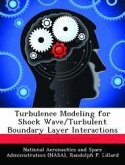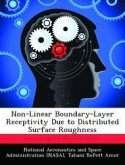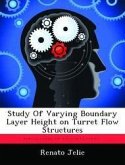A series of experiments were performed to investigate the effects of Mach number variation on the characteristics of the unsteady shock wave/turbulent boundary layer interaction generated by a blunt fin. A single blunt fin hemicylindrical leading edge diameter size was used in all of the experiments which covered the Mach number range from 2.0 to 5.0. The measurements in this investigation included surface flow visualization, static and dynamic pressure measurements, both on centerline and off-centerline of the blunt fin axis. Surface flow visualization and static pressure measurements showed that the spatial extent of the shock wave/turbulent boundary layer interaction increased with increasing Mach number. The maximum static pressure, normalized by the incoming static pressure, measured at the peak location in the separated flow region ahead of the blunt fin was found to increase with increasing Mach number. The mean and standard deviations of the fluctuating pressure signals from the dynamic pressure transducers were found to collapse to self-similar distributions as a function of the distance perpendicular to the separation line. The standard deviation of the pressure signals showed initial peaked distribution, with the maximum standard deviation point corresponding to the location of the separation line at Mach number 3.0 to 5.0. At Mach 2.0 the maximum standard deviation point was found to occur significantly upstream of the separation line. The intermittency distributions of the separation shock wave motion were found to be self-similar profiles for all Mach numbers. The intermittent region length was found to increase with Mach number and decrease with interaction sweepback angle. For Mach numbers 3.0 to 5.0 the separation line was found to correspond to high intermittencies or equivalently to the downstream locus of the separation shock wave motion.
Hinweis: Dieser Artikel kann nur an eine deutsche Lieferadresse ausgeliefert werden.
Hinweis: Dieser Artikel kann nur an eine deutsche Lieferadresse ausgeliefert werden.








